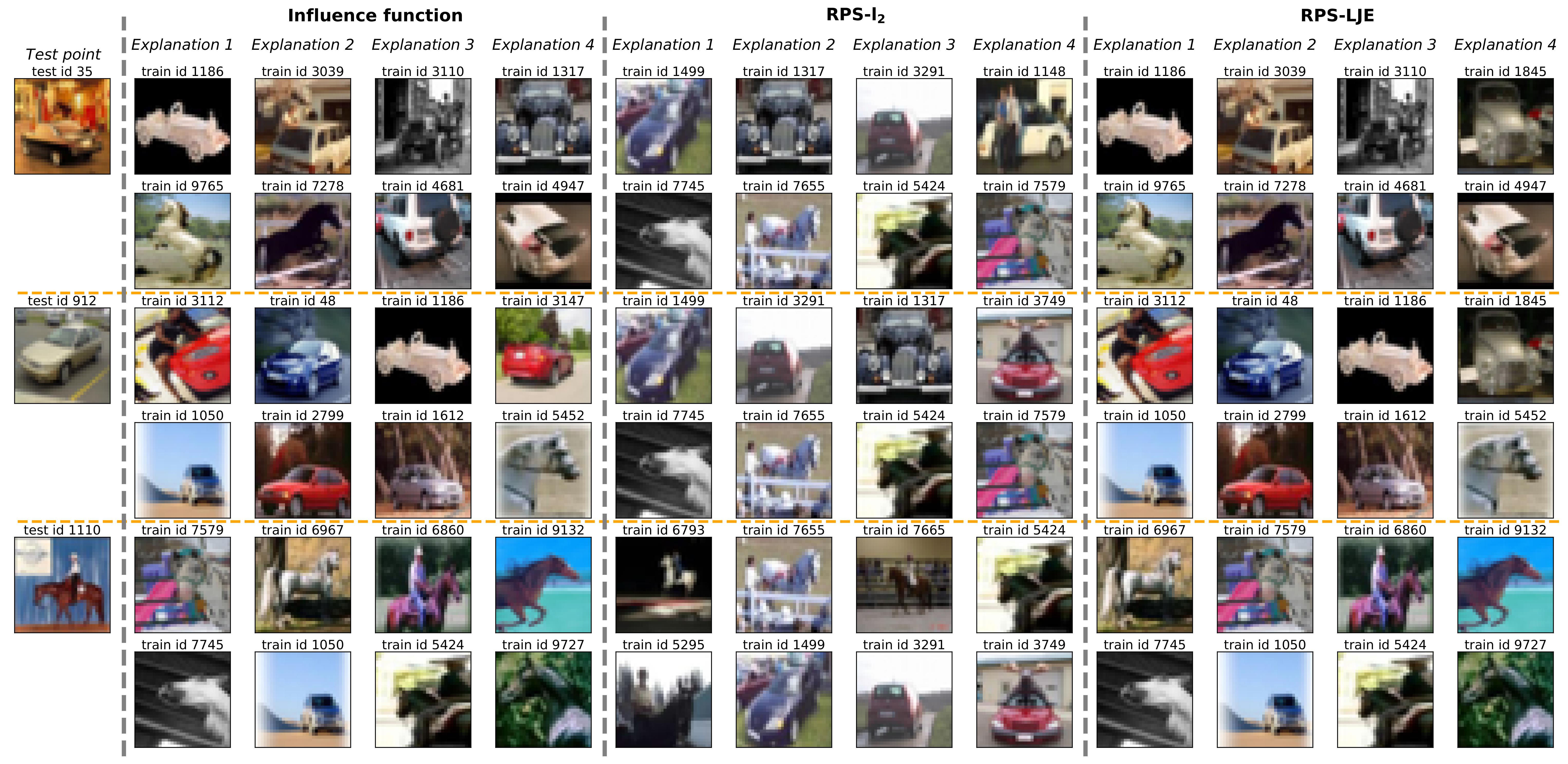Representer Point Selection via Local Jacobian Expansion for Classifier Explanation of Deep Neural Networks and Ensemble Models
This repository is the official implementation of Representer Point Selection via Local Jacobian Expansion for Classifier Explanation of Deep Neural Networks and Ensemble Models at NeurIPS 2021. (will update the link)
We propose a novel sample-based explanation method for classifiers with a novel derivation of representer point with Taylor Expansion on the Jacobian matrix.
If you would like to cite this work, a sample bibtex citation is as following:
@inproceedings{yi2021representer,
author = {Yi Sui, Ga Wu, Scott Sanner},
booktitle = {Advances in Neural Information Processing Systems},
title = {Representer Point Selection via Local Jacobian Expansion for Classifier Explanation of Deep Neural Networks and Ensemble Models},
year = {2021}
}
To install requirements:
pip install -r requirements.txt
Change the root path in config.py to the path to the project
project_root = #your path here
Download the pre-trained models and calculated weights here
- Dowload and unzip the saved_models_MODEL_NAME
- Put the content into the corresponding folders ("models/ MODEL_NAME /saved_models")
In our paper, we run experiment with three tasks
- CIFAR image classification with ResNet-20 (CNN)
- IMDB sentiment classification with Bi-LSTM (RNN)
- German credit analysis with XGBoost (Xgboost)
The models are implemented in the models directory with pre-trained weights under "models/ MODEL_NAME /saved_models/base" : ResNet (CNN), Bi-LSTM (RNN), and XGBoost.
To train theses model(s) in the paper, run the following commands:
python models/CNN/train.py --lr 0.01 --epochs 10 --saved_path saved_models/base
python models/RNN/train.py --lr 1e-3 --epochs 10 --saved_path saved_models/base --use_pretrained True
python models/Xgboost/train.py
We implemented three different explainers: RPS-LJE, RPS-l2 (modified from official repository of RPS-l2), and Influence Function. To calculate the importance weights, run the following commands:
python explainer/calculate_ours_weights.py --model CNN --lr 0.01
python explainer/calculate_representer_weights.py --model RNN --lmbd 0.003 --epoch 3000
python explainer/calculate_influence.py --model Xgboost
To run the dataset debugging experiments, run the following commands:
python dataset_debugging/experiment_dataset_debugging_cnn.py --num_of_run 10 --flip_portion 0.2 --path ../models/CNN/saved_models/experiment_dataset_debugging --lr 1e-5
python dataset_debugging/experiment_dataset_debugging_cnn.py --num_of_run 10 --flip_portion 0.2 --path ../models/CNN/saved_models/experiment_dataset_debugging_fix_random_split --lr 1e-5 --seed 11
python dataset_debugging/experiment_dataset_debugging_rnn.py --num_of_run 10 --flip_portion 0.2 --path ../models/RNN/saved_models/experiment_dataset_debugging --lr 1e-5
python dataset_debugging/experiment_dataset_debugging_Xgboost.py --num_of_run 10 --flip_portion 0.3 --path ../models/Xgboost/saved_models/experiment_dataset_debugging --lr 1e-5
The trained models, intermediate outputs, explainer weights, and accuracies at each checkpoint are stored under the specified paths "models/MODEL_NAME/saved_models/experiment_dataset_debugging". To visualize the results, run the notebooks plot_res_cnn.ipynb, plot_res_cnn_fixed_random_split.ipynb, plot_res_rnn.ipynb, plot_res_xgboost.ipynb. The results are saved under folder dataset_debugging/figs.
All remaining experiments are in Jupyter-notebooks organized under "models/ MODEL_NAME /experiments" : ResNet (CNN), Bi-LSTM (RNN), and XGBoost.
A comparison of explanation provided by Influence Function, RPS-l2, and RPS-LJE.
